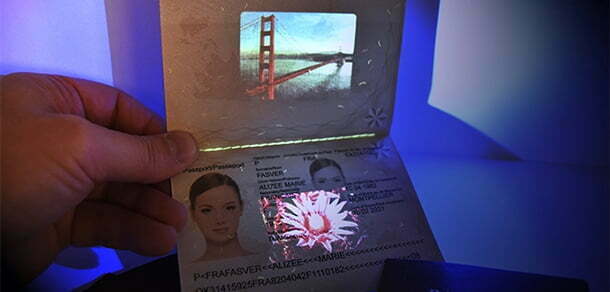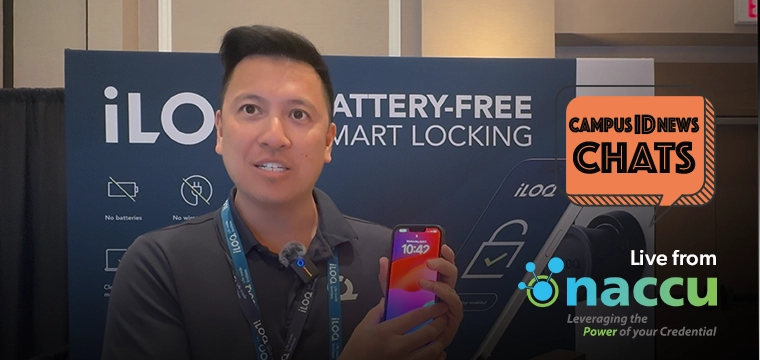
New UV offerings from ITW enable layering of Level 2 UV document security features
Ultra-violet (UV) inks let passport and card issuers embed strong security features into the identity document itself. UV printing is considered a Level 2 – or covert security feature -- because the images are not visible to the naked eye. Instead, they only emerge when a UV light source is present.
ITW Security Division recently released a new embedded security feature that uses UV ink and is uniquely designed to deter counterfeiting of passports, ID cards and other secure documents.
Called Imaprotek, it is a multi-color photographic image that is printed using special UV inks. The detailed, vibrantly colored image is completely invisible under normal light but is vivid when viewed under either UV-A or UV-C light.
“UV prints are an integral part of today’s security documents … that help international law enforcement and border authorities establish their authenticity,” Says Bob Carey, ITW Security Division’s Business Unit Manager.
Here is an example. Take a picture of a country’s national bird, print it using UV ink and embed it into the passport page or card. It adds a strong feature that makes counterfeiting difficult but is still readily detectable to document verification officials in the field.
ITW makes UV printed images even more secure by fusing the Imaprotek image into its Fasprotek security laminate.
Fasprotek is an ultra-thin laminate that can applied onto passport pages or cards to protect the underlying data and add additional embedded security features including OVDs, UV printing, metallic printing, tactile features and many other options.
The combination of the image and laminate adds key security advantages for issuers. First, because the image is built into the laminate it is virtually impossible to alter. Such attempts are immediately obvious thanks to the product’s frangible layers.
Second, because the Fasprotek layer does not block UV light from passing through, the Imaprotek images can be layered on top of other UV printed security elements below the laminate.
Returning to our example, the national bird could be visible using UV-A light in the laminate layer, while another embedded UV image or UV security text could be visible directly beneath it using UV-C light. This layering of covert security features is extremely difficult to fake yet still very easy to verify.
Often protective laminates obscure UV printing below them, and thus negate the value of these security features on variable data pages.
“We have been able to combine the UV security of Imaprotek and protection of Fasprotek to provide an integrated security solution that ensures UV-C is clearly and vibrantly visible across the security document,” says Carey.




